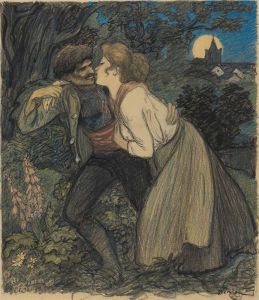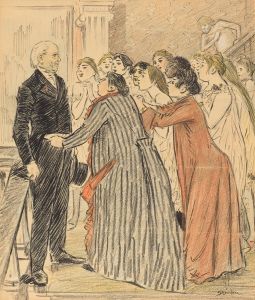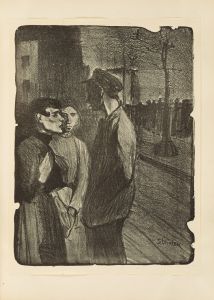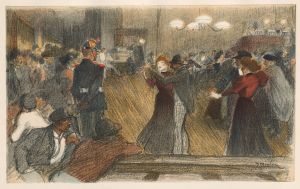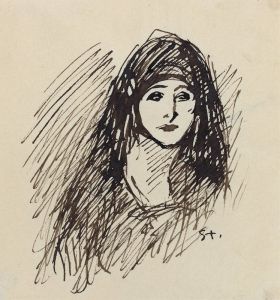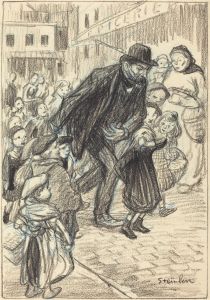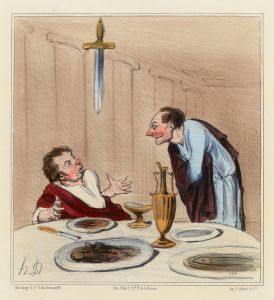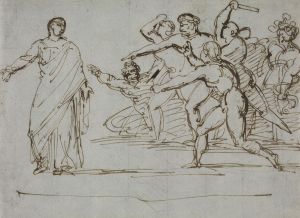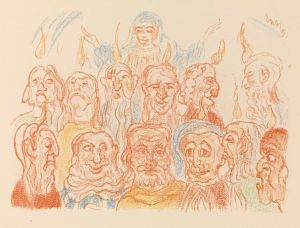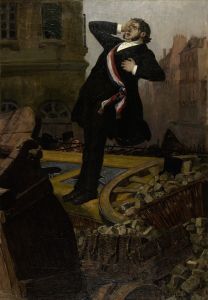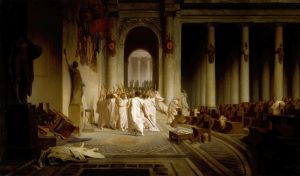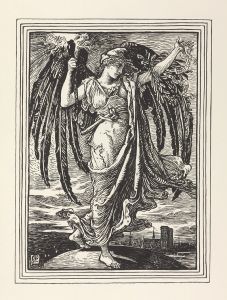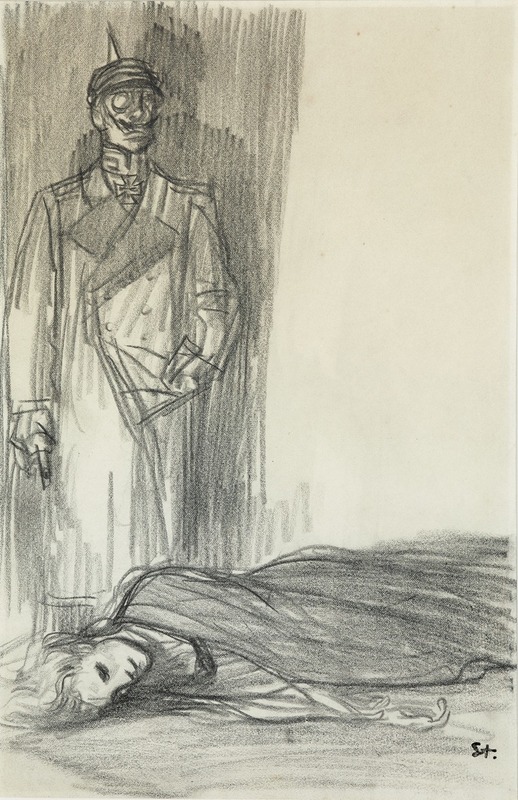
Allégorie de la guerre – Etude pour la France assassinée
A hand-painted replica of Théophile Alexandre Steinlen’s masterpiece Allégorie de la guerre – Etude pour la France assassinée, meticulously crafted by professional artists to capture the true essence of the original. Each piece is created with museum-quality canvas and rare mineral pigments, carefully painted by experienced artists with delicate brushstrokes and rich, layered colors to perfectly recreate the texture of the original artwork. Unlike machine-printed reproductions, this hand-painted version brings the painting to life, infused with the artist’s emotions and skill in every stroke. Whether for personal collection or home decoration, it instantly elevates the artistic atmosphere of any space.
Théophile Alexandre Steinlen's Allégorie de la guerre – Étude pour la France assassinée is a work by the Swiss-born French artist, best known for his contributions to the Art Nouveau movement and his politically charged illustrations. Steinlen, who lived from 1859 to 1923, was deeply influenced by the social and political upheavals of his time, and his art often reflected his leftist ideals and empathy for the working class.
This particular piece, Allégorie de la guerre – Étude pour la France assassinée (translated as Allegory of War – Study for France Assassinated), is a preparatory study for a larger work. Created during or shortly after World War I, the artwork is an allegorical representation of the devastation and suffering caused by the war, with a specific focus on France. The title itself suggests a symbolic portrayal of France as a victim, possibly referencing the immense human and material losses the country endured during the conflict.
Steinlen's style in this piece reflects his characteristic use of strong, emotive imagery to convey his message. While primarily known for his posters and illustrations, Steinlen also created paintings and drawings that addressed themes of war, poverty, and social injustice. In Allégorie de la guerre – Étude pour la France assassinée, he likely employed allegorical figures to personify France and the destructive forces of war, a common artistic approach during this period.
The study is part of Steinlen's broader body of work that critiques the horrors of war and advocates for peace. His art from this era often served as a form of social commentary, resonating with the anti-war sentiment that grew in the aftermath of World War I. While the exact details of this study's composition are not widely documented, it is consistent with Steinlen's commitment to using art as a means of addressing pressing social and political issues.
The artwork is an example of how Steinlen combined his artistic talents with his political convictions, creating pieces that were both visually striking and deeply meaningful. Today, Allégorie de la guerre – Étude pour la France assassinée is recognized as part of Steinlen's legacy as an artist who used his work to engage with the critical issues of his time. Further details about the specific visual elements or the current location of this study are not extensively recorded in public archives.





